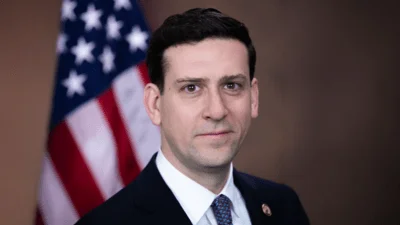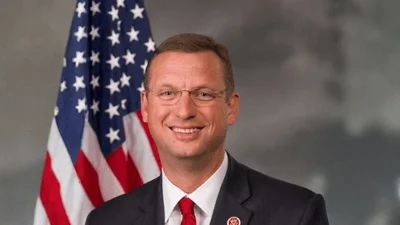Thank you to MEI for inviting me to participate in this important event. You’ve assembled quite an impressive line-up of international CT experts for this conference, with deep experiences and a broad range of background and perspectives.
It is a pleasure to participate in this conference and I am looking forward to a good discussion. As the agenda notes, I am currently the Department’s acting Coordinator for Counterterrorism and have been with the CT Bureau for about two and half years. I also recently assumed a second hat and am now also - for my sins - serving as the acting U.S. Special Envoy for the Global Coalition to Defeat ISIS.
We are now about a month into the Biden-Harris Administration, and I know that there’s a lot of interest in understanding how the new Administration will tackle the CT challenges ahead, and what changes might be made to our CT operations, policies and approach. While there are, of course, limits to what I can say at this stage, I wanted to provide some insights into the Administration’s thinking on these important issues.
First, this Administration is clear eyed about the terrorist threats facing the U.S. and our partners and allies and recognizes full well that the terrorist threat is far from behind us. As Secretary of State Blinken highlighted in his Senate confirmation hearing, we are still concerned “about the ongoing threat posed by what is left of al-Qa’ida, ISIS, and other extremist groups that target the United States." Secretary Blinken also cautioned that while “we succeeded in taking away [ISIS’s] geographic caliphate in Iraq and in Syria…we can’t take our eye off the ball." He also emphasized that “we have seen affiliates of both [ISIS and al Qa’ida] spread to different parts of the world, so we still have our work cut out for us."
The Administration also recognizes that this is a threat we cannot tackle on our own. A successful CT approach is one that actively involves and includes our many partners and allies around the world. The 83-member D-ISIS Coalition is one of the most effective multilateral efforts in history and is an excellent example of how the U.S. can lead a multilateral CT platform that leverages the tools and capabilities of countries around the globe against a common enemy.
But the Biden-Harris Administration also knows that while we must proceed expeditiously, and that the terrorists won’t stand idle while new policies and approaches are being deliberated, we must also move forward strategically.
I also wanted to convey at the outset of our discussion today and at the beginning of my tenure as acting S/E something that I believe is quite important. And that is to share with you the clear guidance that we have received from the Biden-Harris Administration that we will avoid announcing major policy initiatives or posture adjustments in a way that surprises partners and allies. The expectation is that we will consult and coordinate. We need to be consistent, thoughtful, and consultative - both within the U.S. Government and with our allies.
This is why the Biden-Harris Administration has launched several counterterrorism related strategic reviews to take stock of where we are on key issues and map out a path forward. At the top of this list is the NSC-led Domestic Violent Extremism “100 day sprint." This review, informed by the January 6 attack on the Capitol, aims to better understand the threat domestic violent extremists pose, assess what the U.S. Government is currently doing in this area, and determine what more needs to be done.
While the focus of this review is first and foremost on the domestic threat - often referred to within the government as Racially or Ethnically Motivated Violent Extremism, or REMVE - we are also focused on the transnational linkages of these domestic violent extremists. There is a perception that REMVE actors are largely isolated within their respective countries. However, we have seen increasing evidence of connections between DVEs and REMVE actors abroad, especially in the digital space.
The 2019 attack in El Paso, Texas, where the perpetrator was apparently inspired by the Christchurch attacker’s manifesto, helps illustrate that these threats are not occurring in isolation or in a vacuum. Many of these actors are linked, at least through online communications, making this a transnational threat.
We’ve heard concerns from a number of foreign partners that the U.S. is a central hub, particularly online, for global REMVE ideology. The bottom line is that REMVE is an issue that the U.S. government is following increasingly closely, and which will be a top priority for us in the years ahead. As FBI Director Wray testified last year, the Bureau has elevated REMVE as a “national threat priority, which puts it on the same footing as ISIS."
The Administration is also conducting a formal interagency review of the detention facility at Guantanamo Bay, in line with the broader goal of closing the facility.
The Administration has launched a review of the agreement with the Taliban - including its CT assurances and posture issues, an issue with obvious and important CT ramifications given the origins of this war and the terrorist threats that endure. As President Biden recently stated, he is seeking to bring to “a responsible end…to wars that have dragged on for far too long, while continuing to ensure that terrorist threats cannot endanger the security of the American people."
While the terrorism threat remains serious, it’s also important to note that there has been some real progress in recent years. After its successes in defeating ISIS’s territorial caliphate in Iraq and Syria, and removing al-Baghdadi from the battlefield, the U.S.-led Global Coalition to Defeat ISIS is now playing a role in countering ISIS activity and networks globally, including in Africa. The Coalition held its first meeting focused on West Africa and the Sahel in late 2020 and we anticipate expanding that focus to include East Africa later this year.
The U.S. urged countries of origin to repatriate their foreign terrorist fighters, or FTFs, and their family member, and we have led by example. To date, we have repatriated 12 adult U.S. citizens and 16 U.S. citizen minors from Syria and Iraq. Ten of the adults have been charged with federal crimes. The U.S. has also taken custody of the “Beatles", two British citizens who now face charges in U.S. courts for their crimes against U.S. citizens in the Syria/Iraq region.
We have assisted a number of other countries in repatriating FTFs and their family members for rehabilitation, reintegration, and, when appropriate, prosecution. Kazakhstan has been a notable leader on this front, bringing back hundreds of FTFs and their family members, and launching innovative new rehabilitation and reintegration programs. We’ve focused intensively on building our partners’ civilian counterterrorism capacities, particularly in employing “law enforcement finishes," such as investigating, arresting, prosecuting, and incarcerating terrorists.
These tools have grown increasingly important as the terrorism threat grows more decentralized and moves away from traditional military conflict zones, such as Iraq, Afghanistan and Syria. We’ve seen the real-world impact of these efforts in the Philippines, Bangladesh, Mali, Kenya and Tunisia, among other locales, with our partners preventing terrorist attacks before they take place and responding to terrorist incidents more quickly and effectively.
We’ve worked also closely with the Departments of Defense and Justice to build partners’ capacity to collect and use battlefield evidence in civilian criminal justice proceedings. This has been critical in ensuring that foreign terrorist fighters do not escape accountability for the crimes they committed in Iraq and Syria.
We have been able to leverage platforms in this effort, such as Operation GALLANT PHOENIX, a multinational information sharing effort, to better collaborate and share information. The international community is also heeding our call, with the UN, NATO, Council of Europe, INTERPOL and the EU all taking significant steps in this area, and developing new guidelines, protocols or standard operating procedures on battlefield evidence - in some cases overcoming longstanding skepticism or concern about relying on this type of information.
We’ve also engaged with the tech sector to counter terrorist messaging and propaganda, sharing information about terrorist trends and tactics. Social media companies are now moving more swiftly than in the past to voluntarily take down terrorist content that is inconsistent with their terms of service.
Finally, CT has been at the forefront of international efforts to prevent terrorist travel, including in the development and adoption of UNSCR 2396 in late 2017, which imposed a range of new obligations on governments in this area in response to the phenomenon of FTFs traveling to Iraq and Syria to fight for ISIS.
We have been and remain focused on ensuring that this landmark resolution is effectively implemented, including through championing strong international Standards and Recommended Practices at the International Civil Aviation Organization, leading Global Counterterrorism Forum initiatives on watchlisting and on terrorist transit in the maritime sector, and providing direct capacity building to fund INTERPOL connectivity for many frontline states.
This is just a snapshot of the CT threat picture and landscape, and I look forward to discussing all of this in more depth.
Source: U.S. Department of State, Bureau of Near Eastern Affairs









